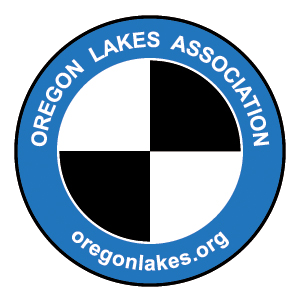

Sponsored by Oregon Lake Association
Oregon Department of Environmental Quality,
and Oregon State University
2024 Oregon Cyanobacterial Harmful Algae Bloom Meeting
Friday, March 8, 2024, Oregon State University, Corvallis
Video Recording of Presentations
Timeline and links to slides below
0:00:10 1. Introduction/Welcome, Theo Dreher, Oregon State University & OLA President SLIDES
0:04:50 2. David Farrer, OHA, 2023 CyanoHABs review, 2024 program SLIDES
0:32:30 3. Gregg Baird, OHA, Cyanotoxin monitoring requirements for public water systems in Oregon & 2023 recap SLIDES
1:00:25 4. Karen WIlliams, DEQ: DEQ Laboratory HABs Activities: 2023 and looking forward SLIDES
1:22:12 5. Dan Sobota, DEQ: Updated ODEQ CyanoHAB strategy and new workflow prioritization SLIDES
1:52:00 6. Michael Paul, US-EPA Washington DC, New organizational and policy efforts for the national CyanoHABs program SLIDES
2:15:25 7. Rochelle Labiosa, US‐EPA Region 10 (AK, ID, OR, WA) Seattle office, Regional HABs events 2023, what to expect in 2024, and research, policy, and funding focus areas SLIDES
2:35:35 8. Mark Sytsma, Professor Emeritus, PSU Center for Lakes and Reservoirs, Enhanced CyanoHABs Management program recommendations for Washington State SLIDES
What CyanoHAB research or monitoring is going on in Oregon?
3:33:10 9. Lara Jansen, US-EPA, Corvallis, Mountain blues to blue-greens: Watershed, lake and food web factors influence nitrogen-fixing cyanobacteria in mountain lakes SLIDES
4:00:10 10. Zoe Chavis, Dept. of Biological & Ecological Engineering, Oregon State University, A sensitivity analysis to better understand uncertainty in HCB water quality modeling. CyanoHABs in Detroit Reservoir, 2011-2022: How the toxin of concern changed from cylindrospermopsin to microcystin. SLIDES
4:10:40 11. Theo Dreher (Oregon State University) SLIDES
4:31:30 12. Kurt Carpenter (US Geological Survey) SLIDES
4:49:25 13. Norm Buccola US-Army Corps of Engineers) SLIDES
5:03:45 & 2nd Video Recording 14. Amalia Handler, US-EPA, Corvallis, Distribution of Cyanobacteria and Microcystin in Lakes of the Conterminous United States Driven by Combination of Lake, Watershed, and Climate Characteristics SLIDES
ENQUIRIES TO:
Dr. Theo Dreher, Department of Microbiology, OSU
theo.dreher@oregonstate.edu
or
Dan Sobota, OR-Department of Environmental Quality, Daniel.SOBOTA@deq.oregon.gov